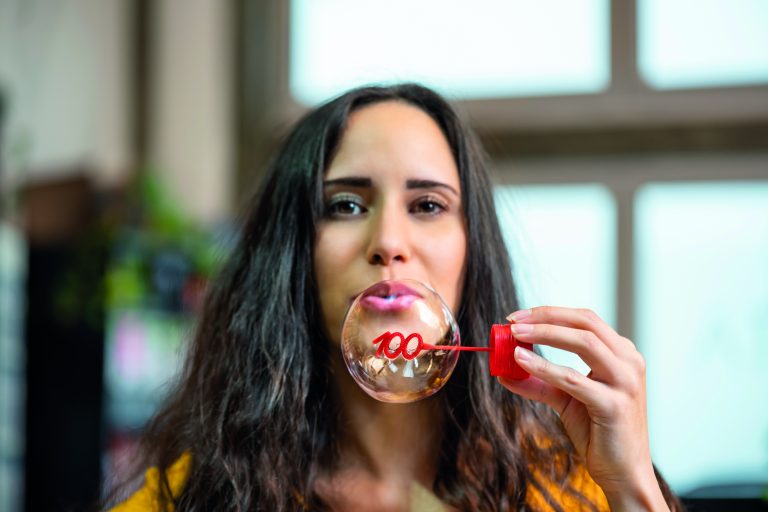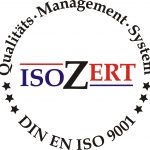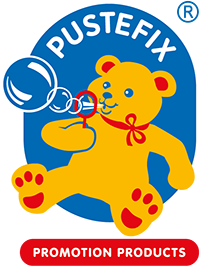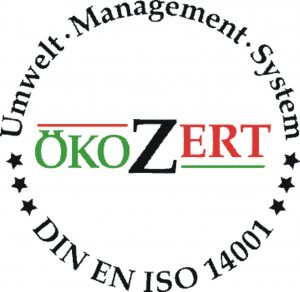PUSTEFIX soap bubbles - Emotional advertising for all ages!
While experimenting with detergent formulas, Dr. Rolf Hein came across a very special mixture in 1948. This should be perfectly suitable to let soap bubbles fly. Packed in an aluminum tube to blow quickly, he invented the soap bubble game PUSTEFIX.
Nobody – at first probably not even he himself – could have guessed at that time what a success story PUSTEFIX would become. Today, soap bubbles from PUSTEFIX can be admired all over the world – and the fragile bubbles always delight people and raise a smile.
Since 1993, the PUSTEFIX classic has also been offered for promotional printing. First under the own division SUCCESS – promotion, today under the name PUSTEFIX Promotion Products, but always under the management of the soap bubble specialists of PUSTEFIX.
The fantastic soap bubbles of PUSTEFIX are today so much more than pure amusement. They stand for educational play, entertainment for young and old, scientific research with surface tensions, comforting companions in children’s clinics, supporting assistants in speech therapy, fascinating eye-catchers to watch, fun factor at any event, pure joy at home, on the road, on vacation, a haven of peace in the hectic world and finally also as a magical reminder of carefree childhood days for every adult.
Soap bubbles – the messengers of lightness
Bring a smile to your customers’ faces with PUSTEFIX, because nothing remains more memorable than an emotional advertising medium that gives a moment of joy!
Use this enthusiasm also for your advertising, because soap bubbles always fit!
The list of our reference customers exceeds every frame and therefore we don’t know of any industry in which the “messengers of lightness” have not already been successfully used for advertising
Due to our flexible production “Made in Germany” we are able to handle large orders with several 100.000 pieces as well as infinitely many welcome orders for small businesses and craftsmen already from 50 pieces.
Challenge us! We give 100% for your advertising success!

Quality
PUSTEFIX GmbH has been producing at its site in Tübingen/Baden-Württemberg for over 75 years. All products are regularly tested by independent laboratories for the relevant legal regulations and standards. PUSTEFIX guarantees compliance with all legal requirements by the CE mark. The PUSTEFIX bubble liquid is subject to permanent quality monitoring and is also regularly tested by accredited testing laboratories. The company has maintained a quality management system for many years and is certified according to DIN EN ISO 9001:2015.


Environmental protection and social responsibility
Climate change is one of the greatest challenges of our time. Especially as a manufacturer of toys for children, we see ourselves committed to future generations and want to take responsibility. This includes the responsibility towards our employees and their families, as a reliable partner with open communication in the team.
PUSTEFIX has maintained an environmental management system in accordance with DIN EN ISO 14001:2015 for many years, and this is not the only reason why we strive to improve in this area every day.
We have been producing with 100% green electricity at our company headquarters in Tübingen for several years. You can find the current certificate for the annual saving of CO2, through the purchase of electricity from renewable energy sources, in the section Downloads.
Biodegradability is determined according to standardized and prescribed measurement methods of the OECD and is limited in substance to organic substances. The bubble liquids produced by PUSTEFIX contain only organic substances that are readily biodegradable according to OECD criteria.
ClimatePartner certification: a new level of climate protection
ClimatePartner-certified companies or products mean that greenhouse gas emissions have been calculated, reduction targets defined, reductions continuously implemented, climate protection projects financed and transparently communicated. The ClimatePartner-certified label and the associated individual Climate ID website make all five steps transparent.
What are the five steps of ClimatePartner certification?
Companies receive ClimatePartner certification if they have completed all five steps and can therefore demonstrate a comprehensive climate protection strategy.
The steps in detail:
Calculate carbon footprints
Greenhouse gas emissions are calculated for companies or products. The calculation complies with the requirements of the ClimatePartner Protocol, which is based on the Greenhouse Gas Protocol. The carbon footprint of a company is updated annually, the carbon footprint for products every three years at the latest. In addition to the level of emissions, the carbon footprint shows where emissions are mainly generated and where they can be avoided or reduced.
Setting reduction targets
Based on the findings from the carbon footprint, reduction targets are defined for the respective certification category. These set the path for continuous reduction and commit the companies to measurable efforts. Companies that are only ClimatePartner-certified at product level also set themselves at least one additional company-specific reduction target.
Implementing reductions
Appropriate reduction measures to avoid and reduce emissions are derived from the reduction targets. Measures such as switching to green electricity, introducing energy-saving programs or sustainable mobility concepts are implemented on an ongoing basis. Regularly updating the carbon footprints provides an overview of successes in reducing emissions and makes further adjustments visible.Klimaschutzprojekte finanzieren
Due to a lack of technology, there are usually still emissions that cannot yet be avoided or reduced. By providing financial support for climate protection projects, companies can also take responsibility for these emissions.
Climate protection projects demonstrably save CO2 emissions or remove them from the atmosphere – for example through reforestation measures or the replacement of climate-damaging technologies. They also promote the achievement of the UN’s global Sustainable Development Goals, such as the fight against poverty or the improvement of living conditions in emerging and developing countries.Transparent kommunizieren
With the help of the ClimatePartner label and the associated customer-specific Climate-ID website, companies make their climate protection strategy and their climate protection successes transparent. The Climate ID website shows what has been achieved in each of the steps. This gives consumers, business partners and interested parties an overview of where the company stands in terms of climate protection.
What is a climate protection project?
Climate protection projects make a decisive contribution to combating global warming by demonstrably reducing greenhouse gases. This can be achieved through forest protection, reforestation or the expansion of renewable energies. In addition, climate protection projects promote sustainable development in the project countries, for example by improving the supply of clean drinking water or by expanding local infrastructure, creating jobs or preserving biodiversity.
The UN’s 17 Sustainable Development Goals (SDGs) are a globally recognized benchmark for measuring such positive effects. They range from poverty and hunger reduction, education or jobs to the distribution of clean and affordable energy. Each certified climate protection project in the ClimatePartner portfolio contributes to several of these goals, and we list them individually in the project description. Sometimes the added value is so great that they are actually development cooperation projects with a climate protection impact – and not the other way around.
For the global greenhouse gas concentration and the greenhouse effect, it is irrelevant where on earth emissions are caused or avoided, as greenhouse gases such as CO2 are evenly distributed in the atmosphere and the greenhouse gas concentration is therefore roughly the same everywhere on earth.
Criteria for climate protection projects
Climate protection projects must meet internationally recognized standards. In order to prove compliance with the criteria, the projects are certified and audited according to strict criteria, for example the Gold Standard or the Verified Carbon Standard (VCS). This ensures and regularly confirms the climate protection effect of the projects. One of the most important requirements is that the projects are actually additional climate protection measures and that the contribution to reducing CO2 in the atmosphere is clearly measurable. It is guaranteed that the CO2 emissions saved are only used once and that the corresponding verified emission reductions are set aside. This is done via official registers.
Projects must meet the following criteria to be recognized as climate protection projects:
Additionality
Only projects that are dependent on additional funding can be certified as a climate protection project. The project can therefore only be implemented because it receives an equivalent value for the CO2 savings achieved. The project must therefore be dependent on proceeds from emissions trading to cover its financing requirements and be able to demonstrate this need.
Exclusion of double counting
The exclusion of double counting on the voluntary carbon market is ensured by the fact that verified emission reductions are only issued via official registries and each with a unique ID. The verified emission reductions are marked with an ID and represent one ton of CO2 emissions saved or reduced (or one ton of CO2 equivalents). The verified emission reductions can only be decommissioned once. This system prevents double counting.Dauerhaftigkeit
The emission savings must be permanent in order to ensure a long-term benefit for the climate. This criterion is particularly important for afforestation and forest conservation projects: in these projects, the project developer must ensure that the forest areas will exist for several decades, for example for at least 30 years or more. Forests that will revert to pasture in the foreseeable future as a result of slash-and-burn agriculture may not be recognized as climate protection projects.
Regular verification by independent third parties
Climate protection projects must be reviewed at regular intervals by independent third parties or Validation and Verification Bodies (VVBs) such as TÜV, Aenor or SCS Global Services for all of the above criteria. They monitor compliance with the respective standards and retrospectively determine the actual amount of CO2 saved. Monitoring and verification reports are therefore regularly prepared for the projects.
In doing so, we are supporting a project to promote wind energy in Brazil. The new wind farms bring numerous benefits to Brazilian communities and thus contribute to the following UN Sustainable Development Goals (SDGs):
No poverty • High quality education • Clean water and sanitation • Fewer inequalities • Sustainable cities and communities
• Climate protection measures
This climate protection project involves the construction and operation of 14 wind farms in the states of Piauí and Pernambuco in northeastern Brazil. The renewable electricity supplied by the project to the Brazilian power grid makes an important contribution to environmental sustainability by reducing the CO2 emissions that would have resulted from fossil fuel-based power generation in the absence of the project.
The project thus saves a total of 650,000 tons of CO2 per year.Criteria for climate protection projects




“Further information on the supported project can be found at climate-id.com/7FP5E4 on the ClimatePartner website or via the QR code shown above.”



